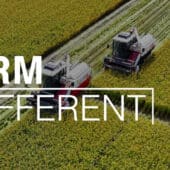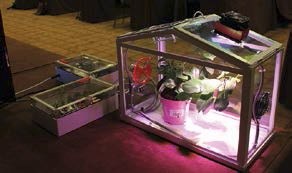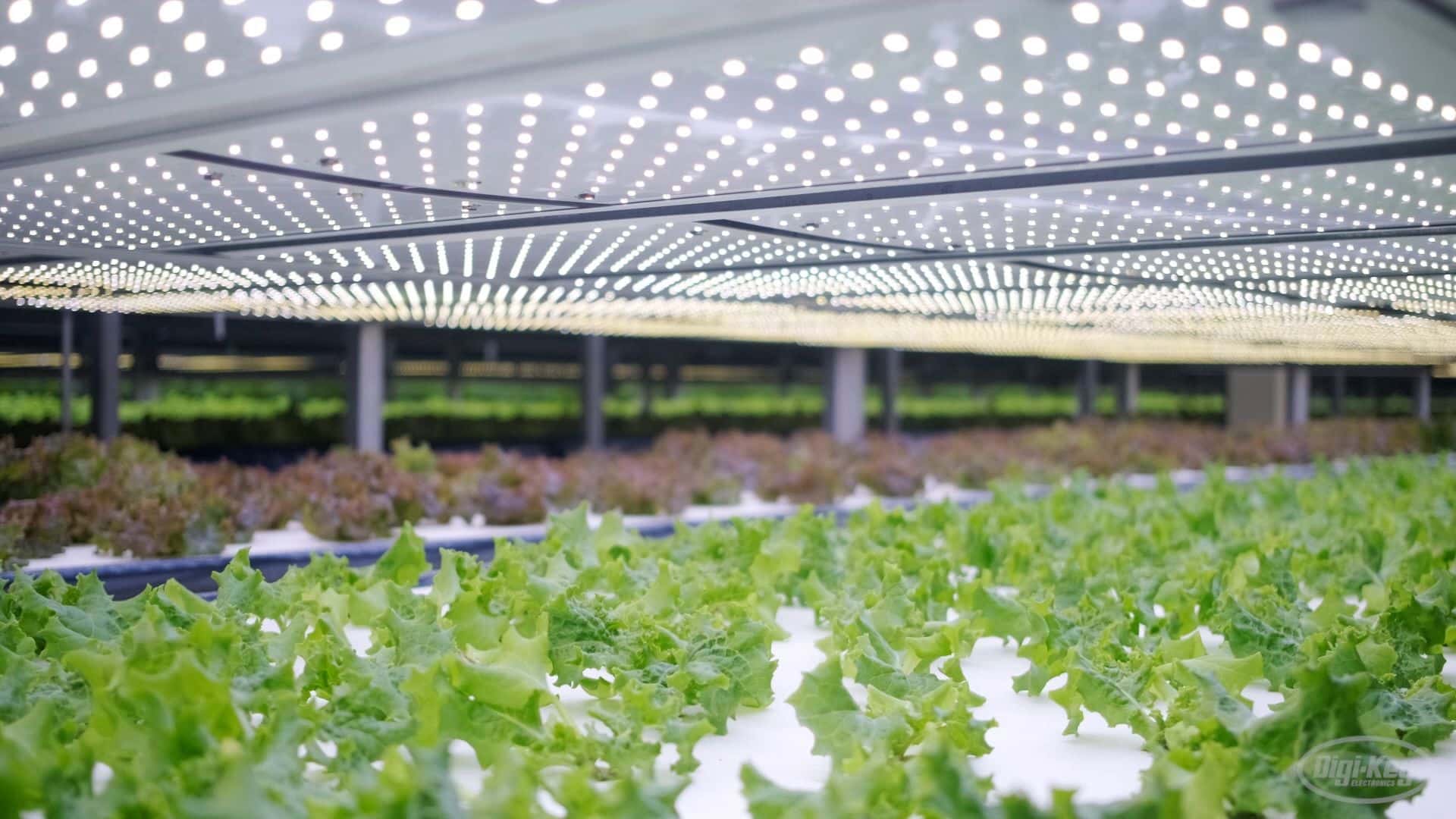Digi-Key North American Publishers Collaboration
Autonomous tractors, drones, and robot seeders, weeders, and harvesters are some of the technologies under development that will transform agriculture and help alleviate food shortages by improving the sustainability and productivity of agricultural activities. Autonomous vehicles of all kinds will free people from driving tractors and other machinery, allowing them to carry out more value-added activities. These include the application of precision agriculture that allows to increase yields, reduce negative effects on the environment and improve the sustainability of farms by addressing problems related to water scarcity, labor shortages and other constraints. .
While drones and agricultural robots represent new systems that are being developed and implemented from the ground up, tractors are different. There is already a large installed base of tractors and they tend to have a long operational life. As a result, in addition to developing new fully automated designs, existing tractors will be retrofitted with electric drives and upgraded with dedicated digital systems, so-called 'digital tractor implements'.
This article analyzes the development of digital implements for tractors and the new electric tractors (e-tractors). It discusses the challenges posed by the deployment of autonomous tractors and explores how drones, sensors on tractors, and AI and ML are used in precision agriculture. It also examines some of the technologies needed to make autonomous farm vehicle development a reality and how Digi-Key's broad product offering, including machine vision, motors and controls, power converters, sensors and switches, hardwired communications interfaces, and wireless devices and a range of power and signal cables and connectors, can help designers speed up their development processes. The article concludes with a brief look into the future, in which fully autonomous farms will be controlled by sophisticated operating systems capable of managing mixed fleets, including both standard and autonomous farm equipment, to maximize productivity and sustainability.
Farm implements get on the ISObus
Like Industry 4.0, agriculture is moving towards the use of intelligent and interconnected machines. That's where the International Organization for Standardization (ISO) 11783, the Serial Data Network Bus for Tractors and Farm and Forestry Machinery, comes into play. In the agricultural sector, it is simply called ISObus. It is based on the Society for Automotive (SAE) J1939 protocol, which includes the Control Area Network (CAN) bus, and has been optimized for agricultural applications. ISObus is actively promoted by the Agricultural Industry Electronics Foundation, which works to coordinate enhanced certification testing of ISO 11783.
Before ISObus, farmers were left with tractors with proprietary control systems that limited flexibility, performance and interoperability. The ISObus includes standardized connectors, communication protocols and operational guidelines, and allows the development of interconnected sensor and control systems from different manufacturers (Figure 1). ISObus also supports the electrification of tractor implements, including electrically actuated mechanical power take-offs (PTOs) and high voltage connectors up to 700 volts (V) and 100 Kilowatts (kW) to power electrically actuated implements.
 Figure 1: ISObus can enable the integration of sensors and implements from various manufacturers into a plug-and-play system. (Image source: Armin Weigel/dpa (Image by Armin Weigel/picture alliance via Getty Images)
Figure 1: ISObus can enable the integration of sensors and implements from various manufacturers into a plug-and-play system. (Image source: Armin Weigel/dpa (Image by Armin Weigel/picture alliance via Getty Images)
The ISObus is evolving to develop a Tractor Implementation Management (TIM) system. As planned, the advanced version of the ISObus will allow implements to provide information to the tractor, which will contribute to the optimization of the combined tractor/implement system. It will also allow for greater integration of sensors into precision agriculture implements. The tractor will provide location information, and the combined system will continuously collect data on soil and crop conditions. More detailed information allows for increased performance and sustainability.
e-tractors, retrofits and autonomous tractors
In addition to the continued development of the ISObus, the electrification of tractors will be important for the future deployment of autonomous vehicles and increased agricultural sustainability. Reducing emissions is an essential consideration. A quarter of global greenhouse gas emissions come from agriculture and related activities, and one tractor is equivalent in emissions to 14cars1.
Electric tractors begin to appear. In addition to reducing emissions, electric tractors can significantly reduce fuel costs. Electric tractors are currently limited to the smallest models, as the big, powerful ones require larger batteries than the conventional tractor they would replace. Large e-tractors also weigh more, which causes more undesirable soil compaction. Finally, the charging times of large batteries/cells are too long to be practical on a farm. Smaller electric tractors with motors ranging from 25 to 70 horsepower (CV), about 18.6 to 52 kW, and small battery packs are already being tested. The electrification of tractors goes beyond the kinematic chain. It is also about replacing the hydraulic system to drive and control the tractor implements (Figure 2).
 Figure 2: Small e-tractors with 25 to 70hp engines are being tested and ready for deployment. (Image Source: Photo by brizmaker via Getty Images)
Figure 2: Small e-tractors with 25 to 70hp engines are being tested and ready for deployment. (Image Source: Photo by brizmaker via Getty Images)
For larger tractors, hybrid retrofit kits are available. For example, one company offers a kit with a 250 kW generator that can be coupled to the tractor's internal combustion engine instead of the hydraulic pump. The kit also includes four electric motors to replace the hydraulic drive system and an electric drive to power existing implements. By replacing hydraulic systems, the retrofit kit reduces fuel and maintenance costs and increases the availability and reliability of the hybrid e-tractor.
Like the deployment of autonomous cars and trucks, that of autonomous tractors faces an indeterminate future. For example, current regulations in California require that "all self-propelled equipment, when operating under its own power and in motion, must have an operator located at the controls of the vehicle." Full autonomy will have to wait.
flying over the fields
Drones are currently used for a wide range of tasks in agriculture. Some examples are:
- Plant health image. Drones have largely replaced satellite imagery to monitor crop health. Equipped with Normalized Difference Vegetation Index (NDVI) imaging equipment, the drones provide detailed color images that can be used to monitor plant health. While satellite imagery takes time to retrieve and can be accurate to within metres, drones can give images pinpoint accuracy and make it easier to target diseases, pests or other issues in real time.
- Monitoring of conditions on the ground. The drones also monitor soil conditions and the drainage of entire fields. That can allow for more efficient and sustainable irrigation programs.
- Plantation. Drone automated planters are commonplace in forestry industries, and their use is spreading to agriculture in general. Drones can plant trees or seeds quickly and reach inaccessible areas more efficiently. For example, a team of two operators can plant 400.000 trees a day using various drones.
- Spray applications. The use of drones to apply fertilizer and pesticide spray treatments is an emerging application whose use varies by region (Figure 3). For example, in South Korea, drones are used for about 30% of agricultural spraying. Although in Canada it is not legal to use drones for agricultural spraying. In the United States, drone spraying requires licensing and certification, as mandated by the Federal Aviation Administration (FAA) and state departments of agriculture, commerce, and transportation.
 Figure 3: Large drones have been developed that can be used to apply fertilizer and pesticide spray treatments. (Image: Photo by baranozdemir via Getty Images)
Figure 3: Large drones have been developed that can be used to apply fertilizer and pesticide spray treatments. (Image: Photo by baranozdemir via Getty Images)
Precision produces more with less
Even before autonomous tractors become a reality, drones and the electrification of tractors and their implements are expected to foster precision farming and increase sustainability.
According to a study by the Association of [Agricultural] Equipment Manufacturers (AEM), the use of precision agriculture can lead to a 4% increase in crop production, a 7% increase in fertilizer placement efficiency , a 9% reduction in the use of herbicides and pesticides and a 6% reduction in the use of fossil fuels2. In addition, water consumption can be reduced by 4% with precision irrigation.
Those figures are based on current technology. With the advent of connected systems and artificial intelligence (AI), those improvements are expected to multiply. Adding machine learning (ML) to equipment maintenance allows for even more savings and improved sustainability.
According to AEM, autonomous farm equipment is expected to bring an incremental improvement of 24% when both input savings and yield improvement are taken into account. A significant driver of that improvement is the assumption that autonomous machinery will be lighter than the equipment it replaces, resulting in less compaction and better soil conditions.
AI and ML will also be essential to develop precision machines optimized for specific tasks. Machines dedicated to specific tasks can be even smaller than general purpose tractors. For example, small machines are being developed for harvesting crops that require machine vision, delicate touch, and precise dexterity.
Weed control is another area where AI and ML are expected to make a significant contribution for specific tasks. Weed control is difficult, labor intensive and, if not carried out effectively, contributes to using more water and depleting soil nutrients. Crop rotation is a partial solution, but it cannot eliminate the need for herbicides or manual weed control. Weed management robots that combine machine vision with AI and ML are being tested. These small machines also minimize soil compaction (Figure 4).
 Figure 4: Example of autonomous picking robots that combine machine vision with AI and ML. (Image Source: Onurdongel Photo via Getty Images)
Figure 4: Example of autonomous picking robots that combine machine vision with AI and ML. (Image Source: Onurdongel Photo via Getty Images)
Agricultural OS and fleets of autonomous equipment
The agricultural industry looks to a future in which fully autonomous farms will be controlled by a sophisticated operating system (OS) capable of managing mixed fleets, including standard and autonomous agricultural equipment, as well as ground machines and drones, to maximize productivity and sustainability (Figure 5). Those fleets of farm equipment will work in concert to help control capital expenditures, minimize labor needs, and provide the Big Data needed to enable autonomous execution and precision farming. In addition, the operating system of future farms will be standardized and optimized to support a wide range of equipment from many vendors. Adopting the ISObus is only the first step towards a standardized, open source approach to farm automation.
 Figure 5: Swarms of autonomous agricultural machines coordinated on the ground and in flight will enable higher levels of sustainability to be achieved. (Image source: Illustration by Scharfsinn86 via Getty Images)
Figure 5: Swarms of autonomous agricultural machines coordinated on the ground and in flight will enable higher levels of sustainability to be achieved. (Image source: Illustration by Scharfsinn86 via Getty Images)
Other expected benefits of the proposed operating system are reduced CO2 emissions, lower fuel consumption, and optimization of battery/stack charging and management. Big data analytics will also play an important role in the future of agriculture. Massive amounts of real-time data straight from the field will be used to continuously train the AI and ML algorithms needed for operational planning, control and decision-making to optimize precision agriculture.
Summary
It is still too early to develop autonomous agricultural vehicles and sustainable precision agriculture. The industry has led the way with ISObus. The next generation of ISObus will enable greater interoperability and help create more complex and interconnected farm machinery fleets. The goal is the development of an agricultural operating system that can take those fleets of farm equipment, combine them with massive real-time sensor data using AI and ML algorithms, and deploy them as coordinated formations of ground and flying machines that produce high levels of sustainability. and productivity.








